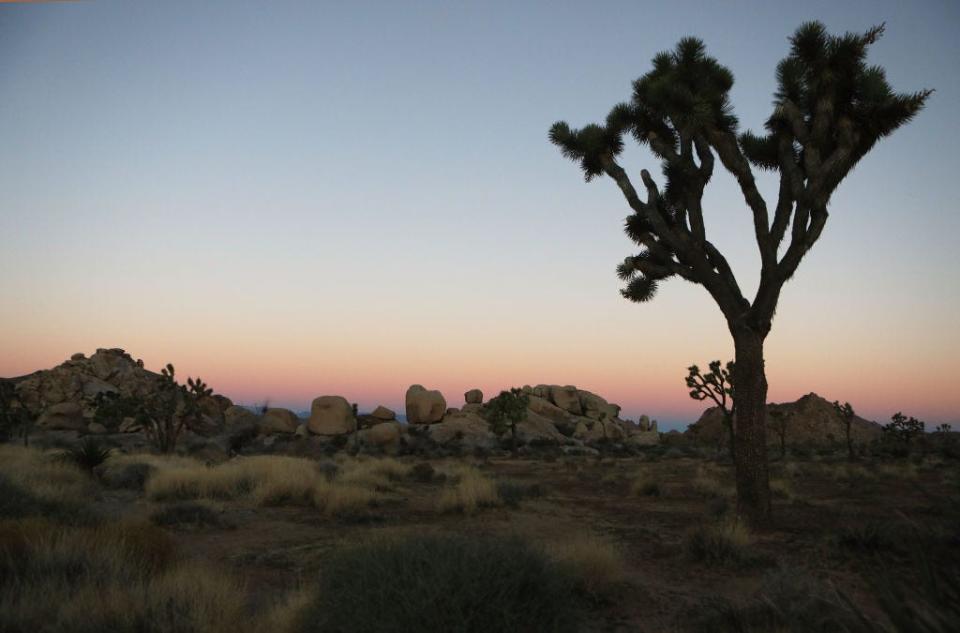No, it's not an 80s spying technique. Here's what Leave No Trace means at national parks.
Anyone who loves the great outdoors has likely heard the phrase Leave No Trace.
It sounds simple enough, but it's more than just picking up after yourself while hiking, camping or enjoying other types of outdoor recreation. It's a whole way of interacting with nature.
While the overarching concept behind stewarding the land dates back thousands of years among Native communities, what we know as Leave No Trace today stems from backcountry land usage guidelines developed decades ago by the U.S. Forest Service, National Park Service, and Bureau of Land Management in collaboration with the nonprofit National Outdoor Leadership School and carried on by the nonprofit Leave No Trace.
Here's what it actually means to Leave No Trace:
How to visit national parks for free: Five dates to save for 2023
Turning one-star reviews into internet gold: Subpar Parks offers a different view of national parks
What is the meaning of Leave No Trace?
The whole idea behind Leave No Trace is to enjoy the outdoors while minimizing manmade impact.
What are the 7 principles of leaving no trace?
Plan ahead and prepare
Travel and camp on durable surfaces
Dispose of waste properly
Leave what you find
Minimize campfire impacts
Respect wildlife
Be considerate of others
On its website, the National Park Service breaks down how each of the seven principles of Leave No Trace applies at national parks. However, if those are too hard to remember, Christine Hoyer, a backcountry management specialist with Great Smoky Mountains National Park, told USA TODAY Leave No Trace boils down to three things: respecting the land and resources, respecting the things that live on the land and respecting other visitors.

Respecting the land and resources
"It's real easy to think ... 'That's not a big deal. It's just me,'" Hoyer said of seemingly harmless actions like carving into trees or wandering off designated trails. "As soon as one person steps off a trail and follows a path somewhere, then compaction happens on the ground, and not only do other people see that and follow it, but water follows it."
That can have a cumulative impact on the land and its inhabitants.
Moreover, it's illegal to remove plants, rocks, or other artifacts from national parks without a permit.
Respecting the things that live on the land
"Everybody's really excited to see the bear and the elk and the things that live here, but we also want to make sure we're honoring that this is their home," Hoyer said. "Any time you get close enough to an animal that it changes its behavior – it looks up from the ground, it notices you – then you're too close to it, and we don't want to do anything that habituates those wild animals to people."
Many parks require visitors to stay at least 25 yards away from most wildlife and 100 yards away from predators like bears. The "feeding, touching, teasing, frightening or intentional disturbing of wildlife nesting, breeding or other activities" is against the law.
'I didn't see people who look like me': How one disabled hiker is clearing a path for others
Respecting other visitors
"The National Park Service wants visitors to have a high-quality experience everywhere they go in the National Park System," Park service regional director Michael T. Reynolds said in testimony submitted to the Senate Subcommittee on National Parks in July 2021.
"The decisions you make and the actions you take on your trip do impact all those folks,” Hoyer said. "Just imagine that you want to do everything you can as a visitor to make sure that everybody coming behind you can have that same experience.”
To enjoy those experiences without crowds, the park service recommends exploring a less-visited national park.
More like this
How national parks can make nature more accessible to every body
New national historic site tells a different segregation story
Veterans get free national park entry for life, in honor of fellow vet
National park history is family history for woman blazing own trail
These adorable sled dogs are carrying on a big legacy at Denali National Park
This article originally appeared on USA TODAY: National parks ask visitors to Leave No Trace. Here's what that means.
